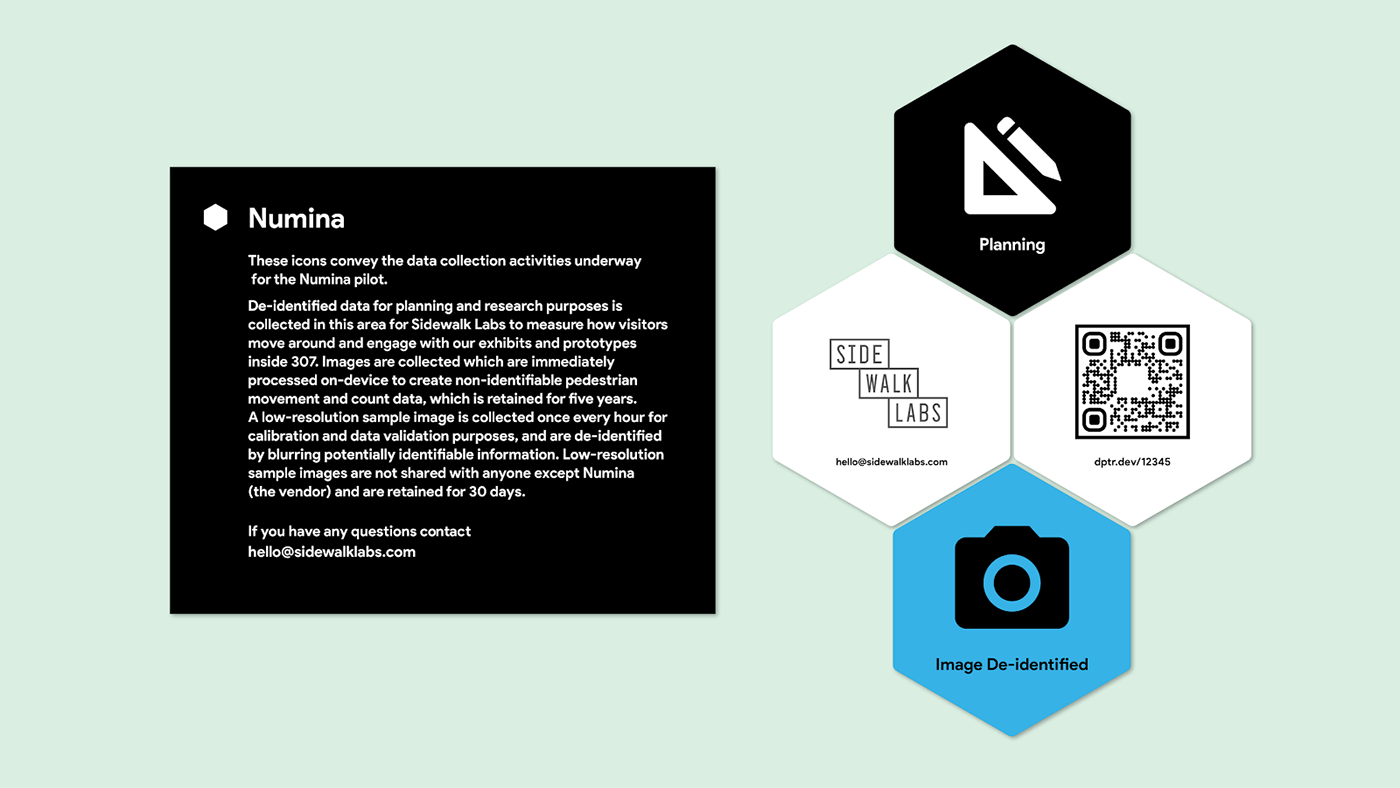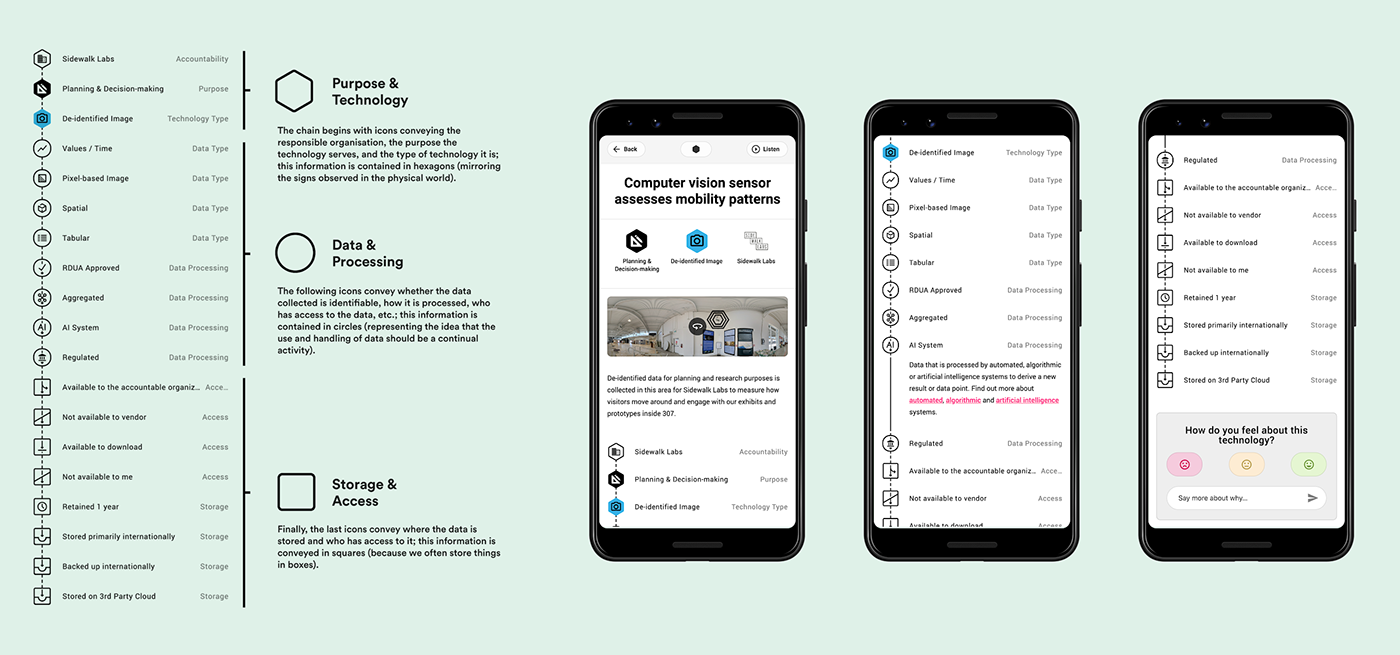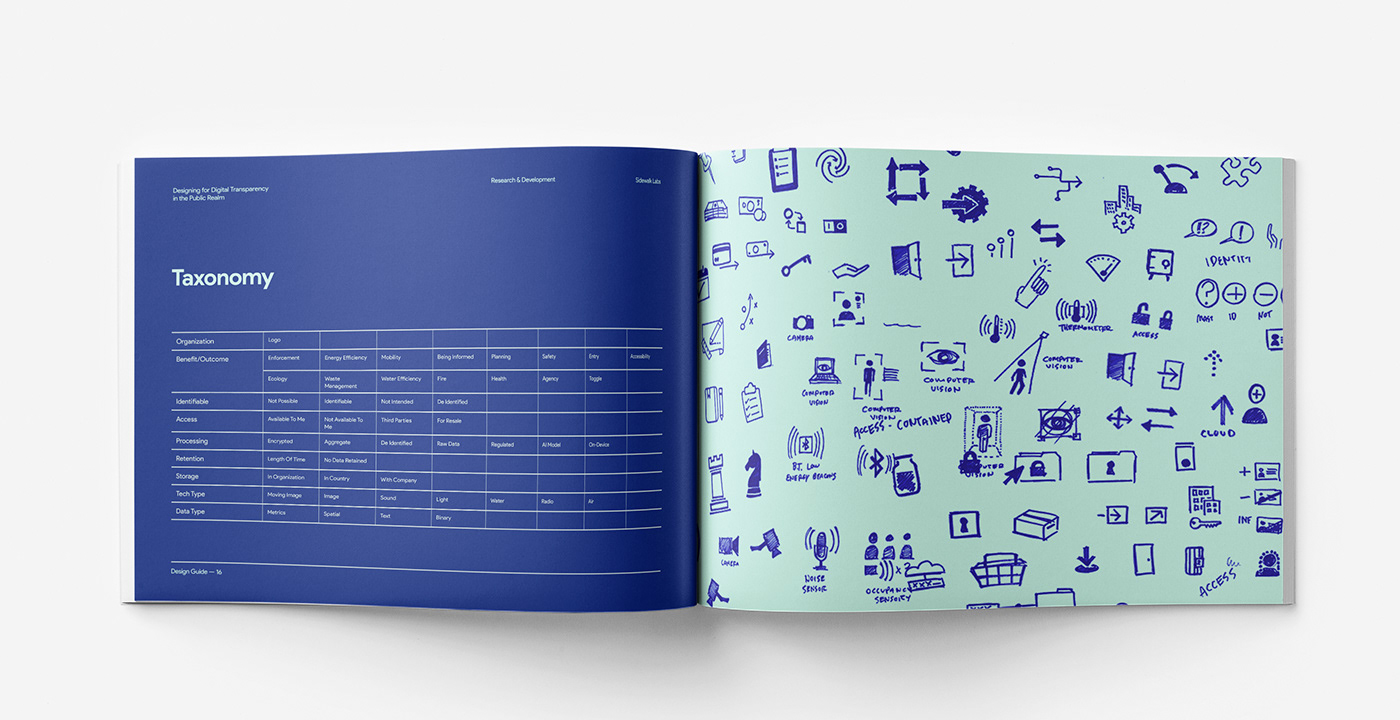
Our goal was to co-develop meaningful design patterns that will eventually be adopted by cities, private partners, and other institutions that are interested in improving digital transparency in public spaces.
Technology is all around us, but often invisible. From CCTVs, to traffic cameras, transit card readers, bike lane counters, wifi access points, to occupancy sensors that turn fixtures like lights and faucets on and off, and open doors.
We believe that individuals should know how and why data is being collected and used in the public realm.
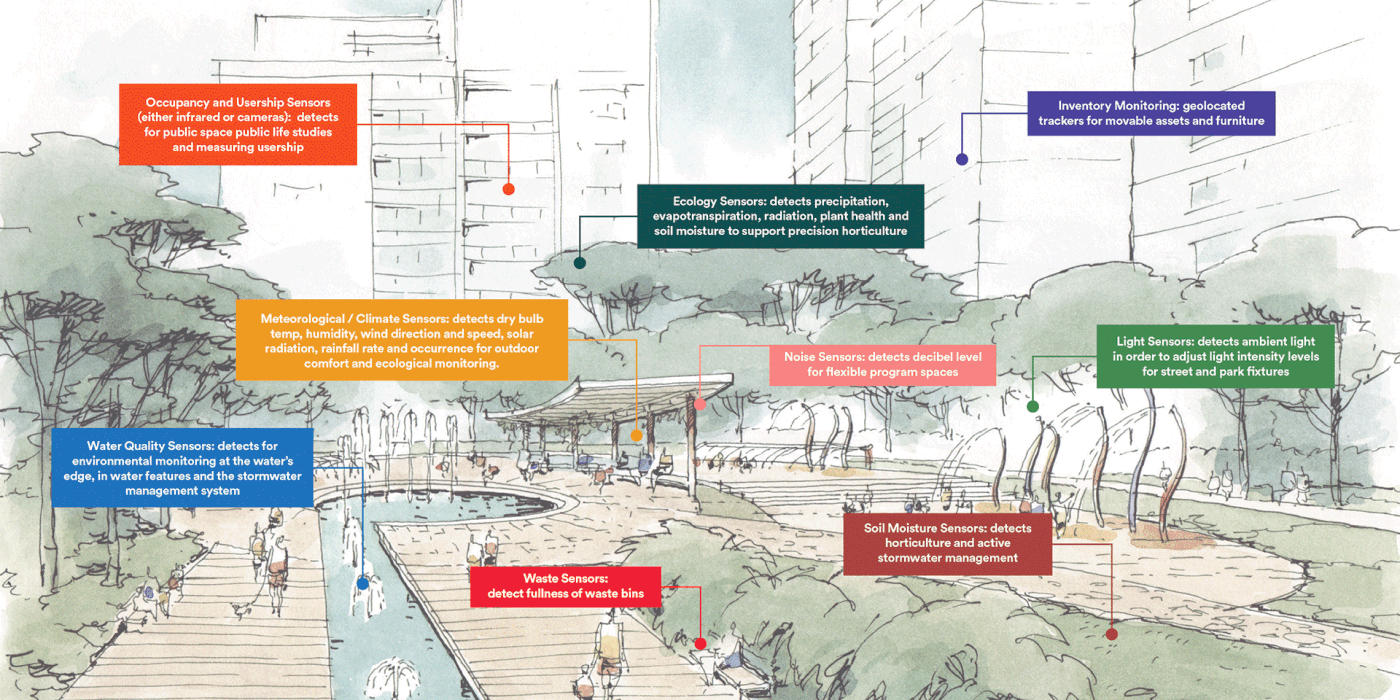
When we started this project, we began to see signs and sensors we would have typically overlooked.
During a commute, a lunch out, a walk in the park, if you start to look for it, the technologies spring forward. But we were left with many questions. There’s little transparency about what is being collected, by whom, and for what purposes. Signage that does appear can be long paragraphs of text, or small snippets that give little venue to follow up and ask more questions.

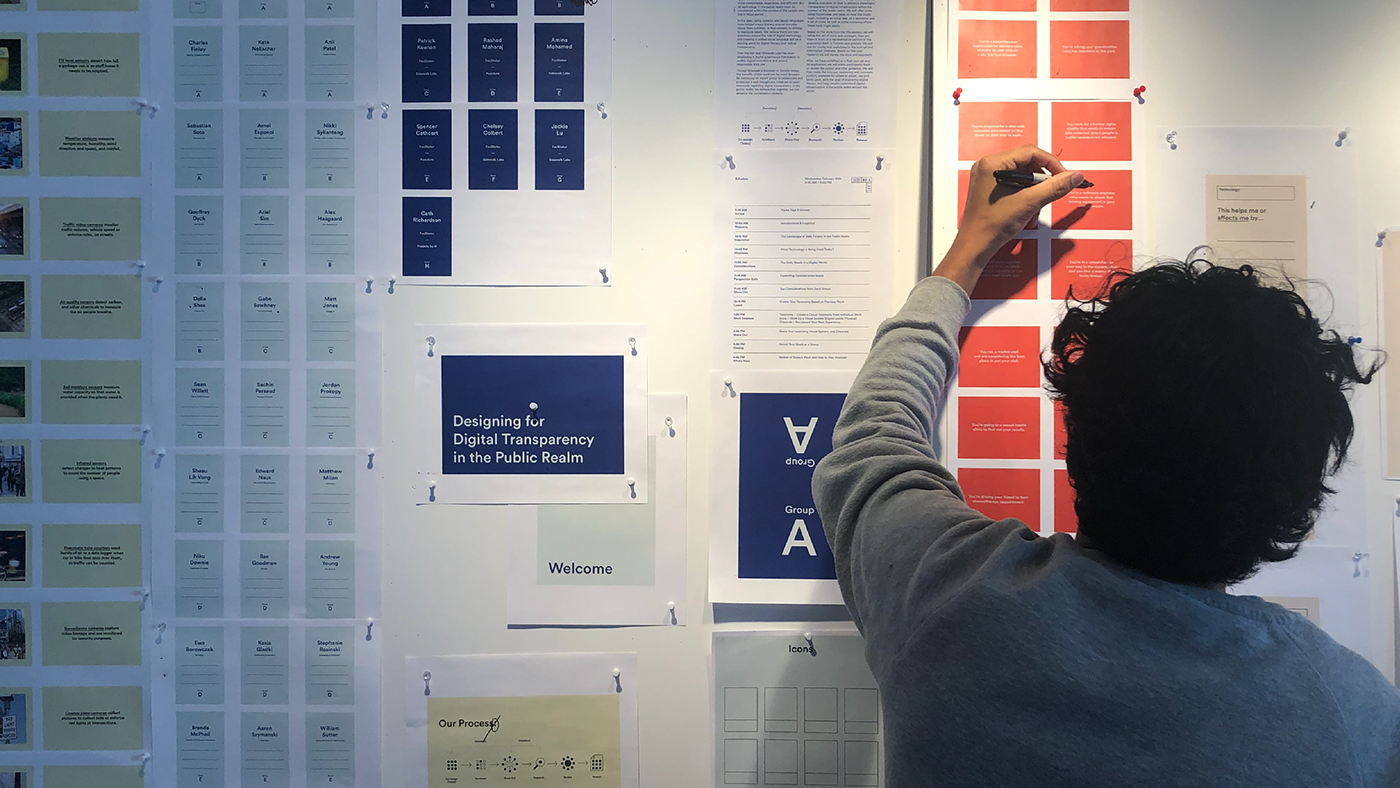
What if there was a better way? A quick way to understand the technology in use? What if it was transparent and clear without being overwhelming? If anyone could learn more through a digital channel, ask questions, or even make better use the space itself?
We brought these questions with us as we embarked on a project to enable digital transparency in the public realm. Together with 100+ participants from several cities, we sketched, debated, iterated, and prototyped.
The first co-design session was held at Sidewalk Labs’ 307 workspace in Toronto, Canada, which Projects By IF helped us facilitate along with members of the Toronto design community.
A week later we held another session in London. As part of The GovLab’s Data Stewards Camp in London, UK.
A session, we thought through a shorter set of exercises with a number of data policy thinkers.
A session, we thought through a shorter set of exercises with a number of data policy thinkers.
A week after that we worked with the World Economic Forum’s Centre for the Fourth Industrial Revolution to host a half day co-design session with another cross-cutting group of participants.
Within the co-design process, we work from existing technology as a starting point and ask participants to consider the questions and concerns they have and write them down on cards.
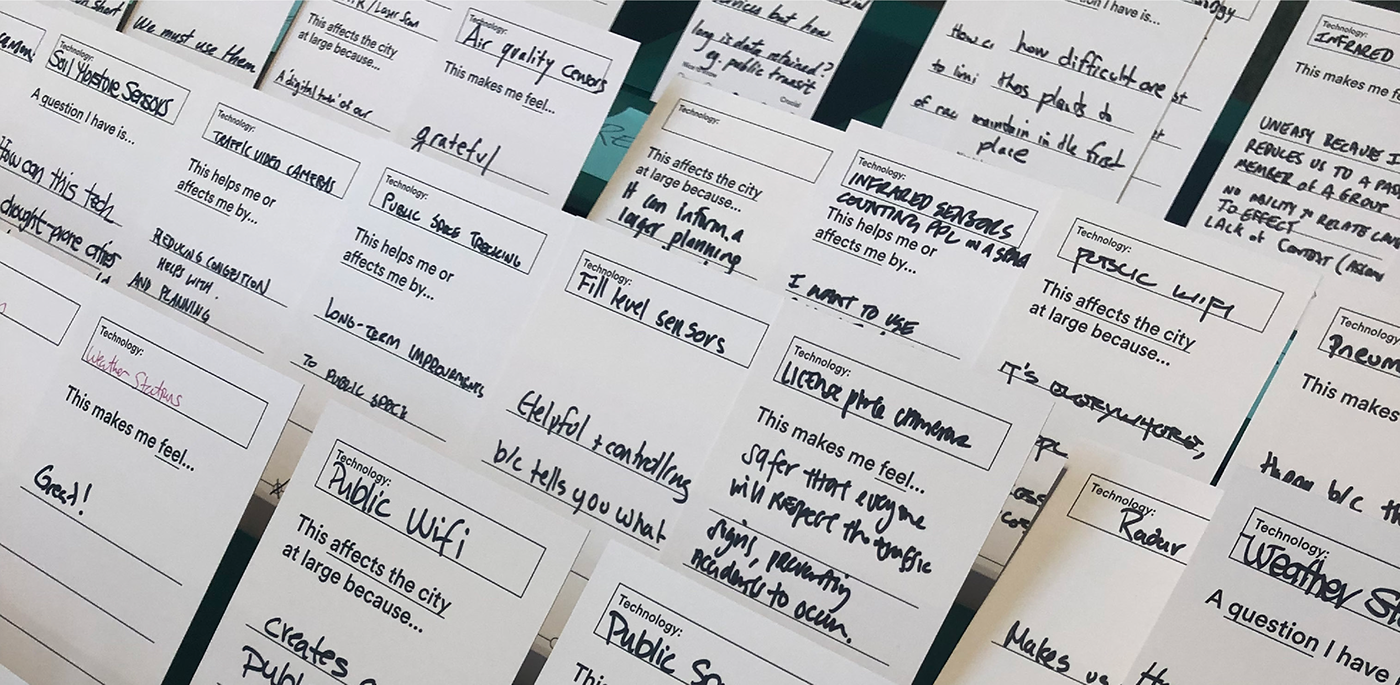


Our actions based on this research was to simplify the signage and offload the complexities to the digital channel. Specifically, we found that people wanted to see the logo of the accountable organization, the purpose of the sensor, and if they were identifiable. Of course they also needed a way to learn more and give feedback: the QR code.
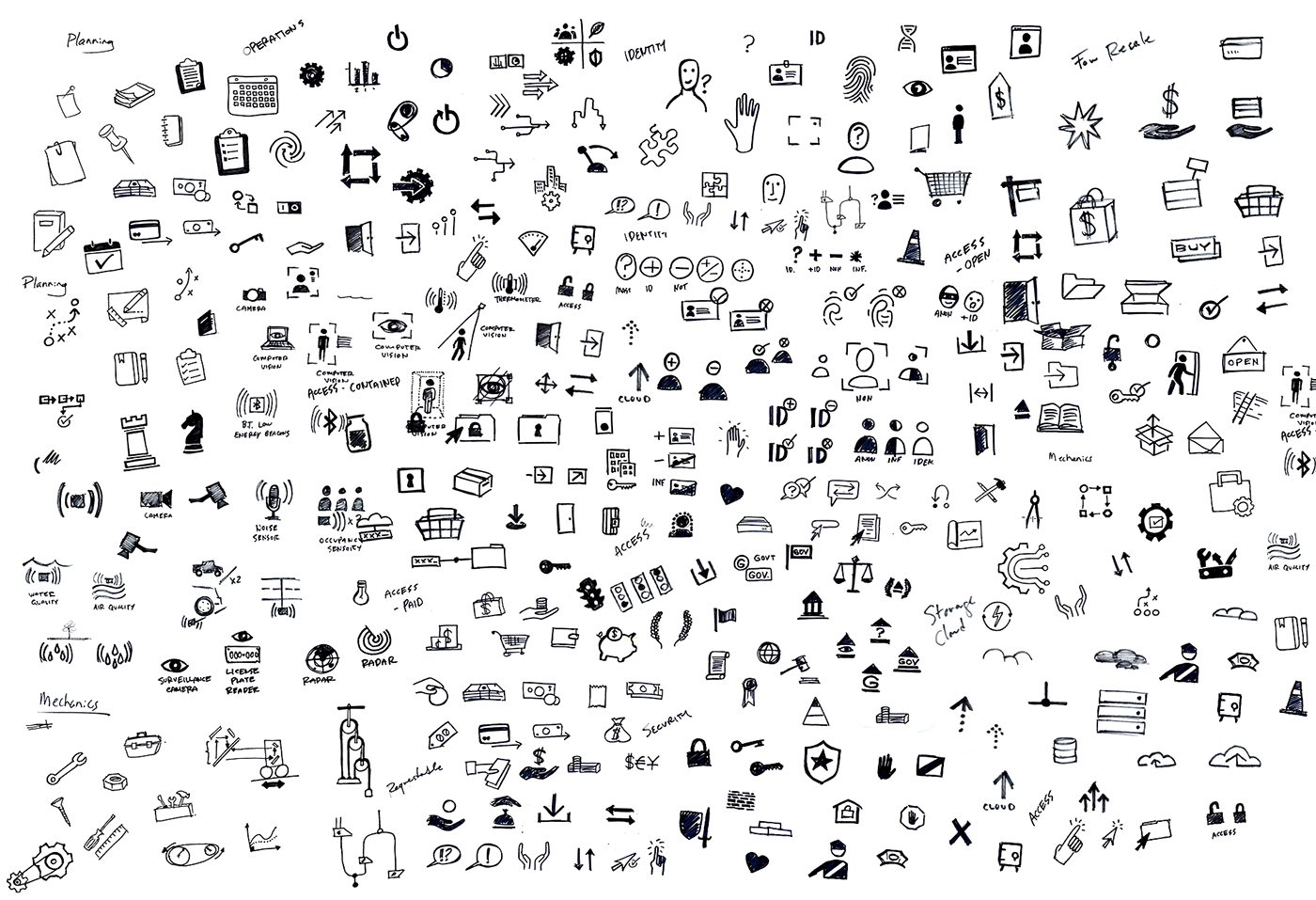
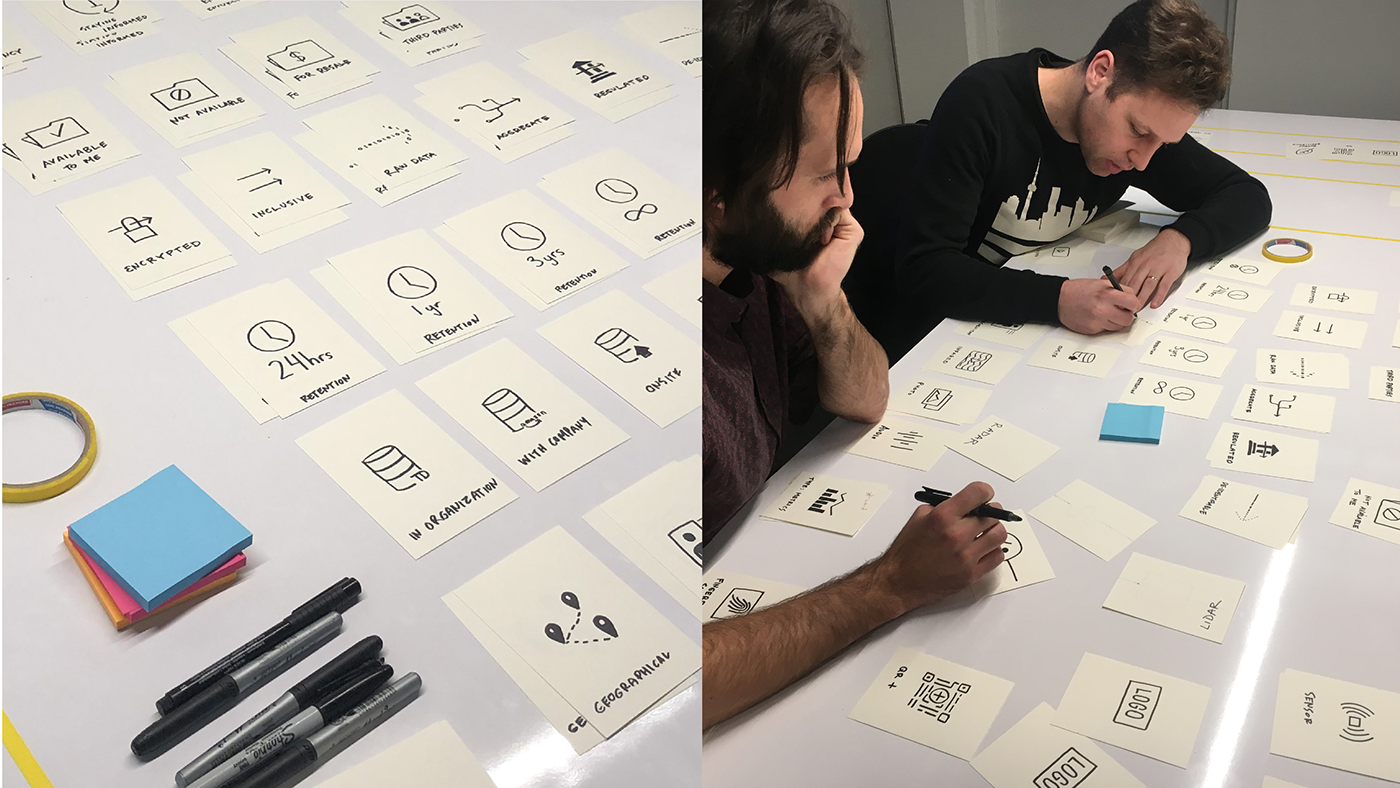
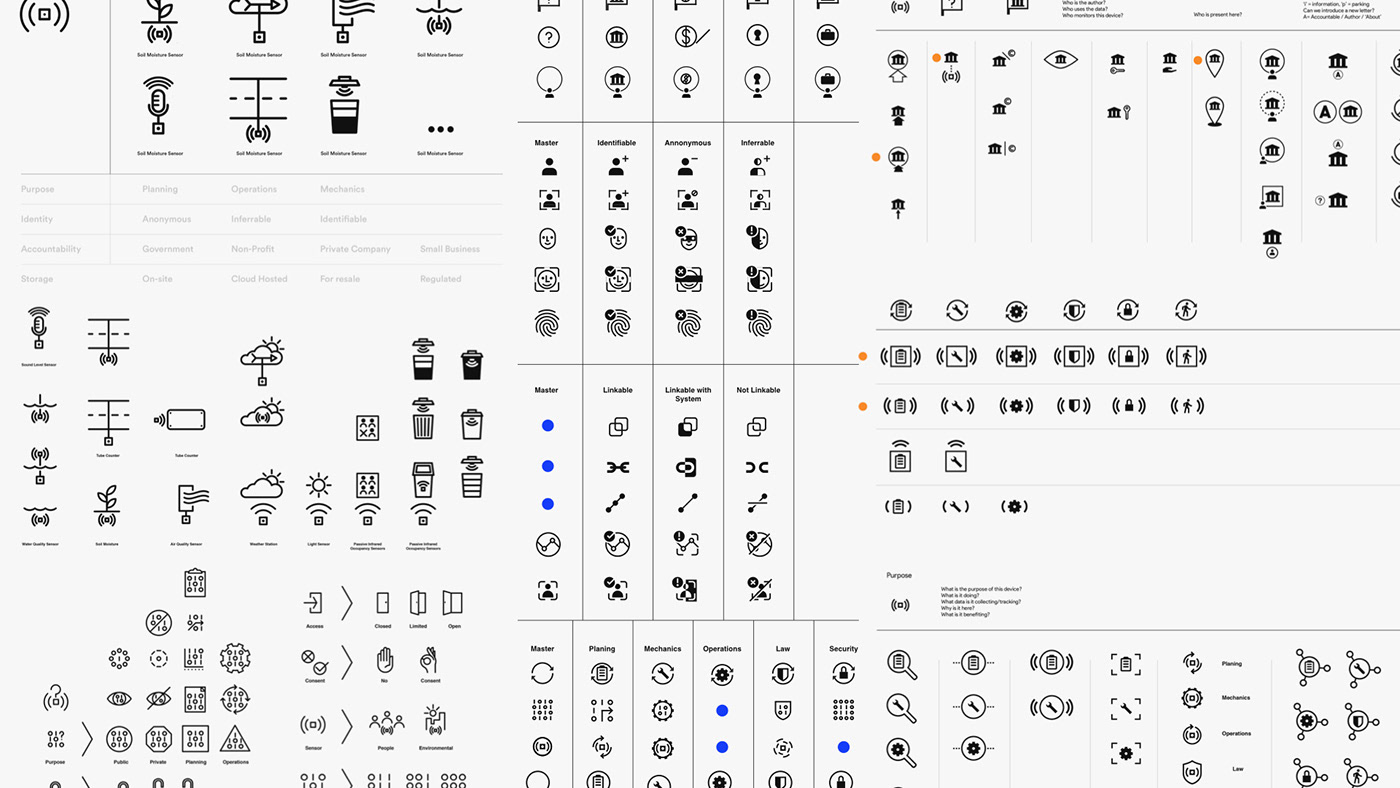
Through this process, our purpose icons came to life. Each icon was carefully crafted and selected to help you understand the most common question around technology in the public realm – What’s the purpose?
We decided to use the most simple and globally understandable symbols to help users understand somewhat complicated technologies.


